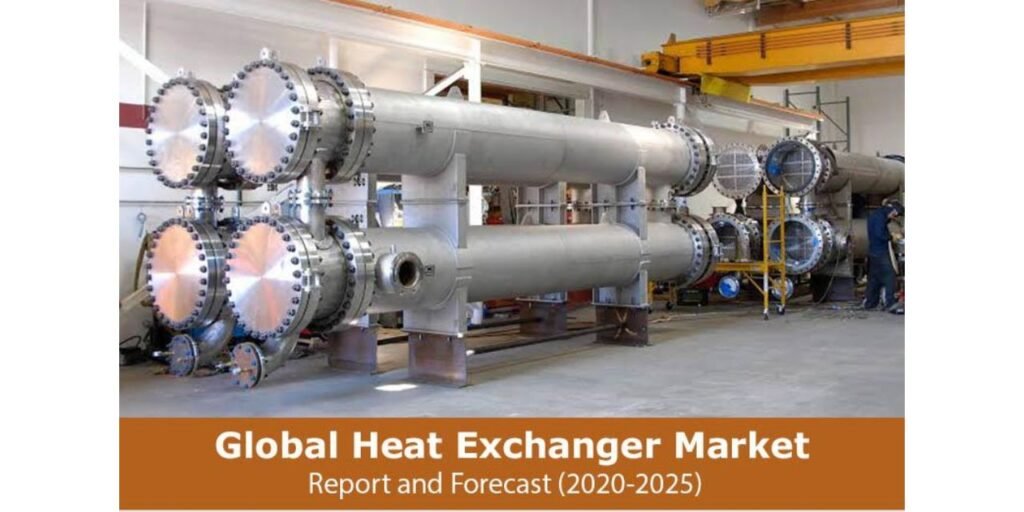
The report “Air-Cooled Heat Exchanger Market by Structure, Material (Stainless Steel, Carbon Steel), Type (Induced Draft, Forced Draft), Fin Design, Capacity, End-Use Industry (Oil & Gas, Power Generation, Data Center), and Region – Global Forecast to 2029″, is projected to reach USD 5.69 Billion by 2029, at a CAGR of 7.5% from USD 3.96 Billion in 2024. The growth of air-cooled heat exchanger market is driven by increasing industrialization in emerging economies, where the expansion of manufacturing and energy sectors is creating a heightened demand for efficient heat transfer solutions. Additionally, the implementation of stricter energy efficiency regulations and emission standards is pushing industries to embrace more sustainable technologies, which further enhances the appeal of air-cooled heat exchangers. These systems are particularly attractive due to their cost-effectiveness and operational benefits, including lower maintenance costs and diminished water requirements.
Download PDF Brochure
Browse
• 178 Market data Tables
• 56 Figures
• 211 Pages and in-depth TOC on “Air-Cooled Heat Exchanger Market – Global Forecast to 2029″
Some of the prominent key players are:
- ALFA LAVAL (Sweden),
- Kelvion Holding GmbH (Germany),
- Kawasaki Heavy Industries, Ltd. (Japan),
- Xylem (US),
- Exchanger Industries Limited (Canada),
- SPX Cooling Tech, LLC (US), and many more….
Opportunity: Growing Demand from Data Centers
The immense demand from the data centers is considered to be one of the most promising opportunities for the air-cooled heat exchanger market. Growing interest in data center cooling solutions is attributed to the growth in data centers and consequent heat generation, and air cooling systems have become particularly beneficial where water is scarce or the emphasis is on sustainability. They have enhanced their capability to handle high thermal loads in high density server arrangements by virtue of technological improvement. Air-cooled systems pursue the energy conservation and decrease of operating costs, which has led to the development of objectives for sustainable data centers and the gradual expansion of the use of these systems in this continuously expanding industry.
Make an Inquiry
“Oil & Gas industry holds the largest share in the air-cooled heat exchanger market during the forecast period, in terms of value.”
The oil & gas sector holds the largest share in the air-cooled heat exchanger market due to its extensive need for efficient cooling solutions in challenging operational environments. Air-cooled heat exchangers are ideal for this industry as they provide reliable thermal management without relying on water, which is crucial in remote locations where water supply may be limited. These systems effectively handle high heat loads generated during processes such as refining and gas processing while withstanding harsh conditions, including high temperatures and corrosive substances. Additionally, the industry’s focus on sustainability and cost reduction aligns with the benefits of air-cooled heat exchangers, which offer lower operational costs and reduced environmental impact compared to traditional cooling methods. The ongoing exploration and production activities in oil & gas further drive demand, solidifying its dominance in the market.
“Asia Pacific captures the second largest share in the air-cooled heat exchanger market during the forecast period, in terms of value.”
The demand for air-cooled heat exchangers (ACHEs) in the Asia-Pacific region is fueled by rapid industrialization and urbanization in countries such as China and India, which increases the need for efficient cooling solutions across sectors such as oil & gas, petrochemicals, and power generation. ACHEs are favored for their ability to optimize heat transfer while minimizing water usage, crucial in water-scarce areas. Additionally, stringent energy efficiency regulations are driving industries to adopt technologies that reduce carbon footprints, with ACHEs providing a sustainable alternative to traditional water-cooled systems. Government initiatives promoting renewable energy further enhance the role of ACHEs in essential heat transfer processes. Technological advancements improve their performance and reliability, while a growing middle class boosts consumer demand for energy-efficient products, reinforcing the market for ACHEs as key components for economic growth and sustainability in the region.
